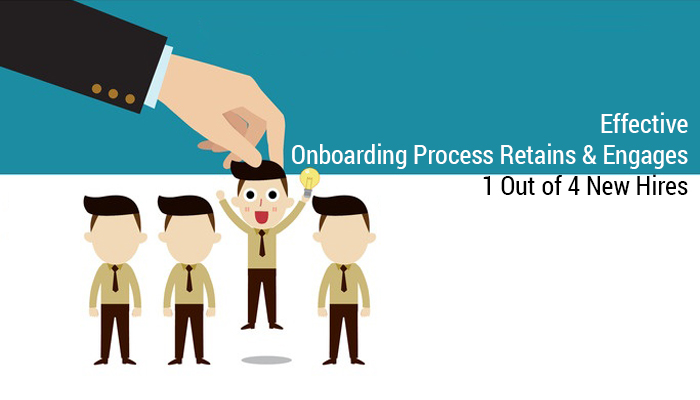Employee onboarding checklist is not only limited to paperwork, verification and covering legal procedures. Rather the onboarding experience for a new hire is more than just completing a set of formalities.
” Onboarding is an amazing opportunity for employers to welcome new employees and give them a worthy experience to start off their new roles ideally. Investing time and efforts to comfort, train and educate new employees about their role & work culture seems to be valuable.
A well-planned onboarding process builds high engagement, low employee turnover and high retention rate. Since there’s always a thin line difference between making a good impression and a good lasting impression, a perfectly designed employee onboarding checklist is what every HR person needs.
Here’s a handy onboarding checklist to implement a step-wise procedure to make new hires familiar with the organization and its culture. Let’s get started.

Pre-Employment Onboarding
What is needed?
- Set up new employee’s workstation.
- Share the orientation schedule.
- Get the verification documentation done.
When an employee is welcomed at his new workplace with a pre-planned orientation schedule, a well-organized workstation with a computer/ laptop and a phone, active email accounts, etc., it definitely leaves the great impression on the new hire. By doing so, the employer appears prepared and excited to welcome the new employees. Of course, this zeal pushes the employee to start taking his responsibilities more seriously from the very first day.
Joining Day and the Following Week
On the joining day, it is necessary to make your employee comfortable at the new work environment. Make him/ her familiar with company policies and give some time to socialize among coworkers. Plan to keep a small part of the first day for formal meetings with the immediate supervisors, managers from different teams, peers and whosoever is related to the work role.
The initial days are not only meant to welcome the employee, but it is also the right time to shift an employee’s focus to his job responsibilities. Introduce the employee with the ongoing projects that the team is handling, and give him the little exposure to work on them. Discuss the key result areas (KRAs) with the employee to encourage him do better and excel in his new job role.
Initial Months: Review Performance
Once the employee is all set to take up the workload and contribute in the team projects, don’t miss to help the employee establish flexible work routine to give maximum productivity.
Depending upon the employee’s job role and probation period, take time to review the performance and share feedback. Sharing feedback – on the performance delivered so far – in one-on-one HR meeting is considered as one of the best onboarding tips. It helps the employee to understand the scope of improvement.
Last but not the least, maintain a track of keeping follow ups at regular intervals. It gives a sense of confidence to the employees and also sends out a message that their day-to-day work performance is measured and valued.
The overall purpose of conducting an effective onboarding is to engage employee in the first place and to tell them that they are valued. Make it a point to take employee feedback periodically to know their experience and job satisfaction levels at every stage, so that you can continue improving onboarding practices and engage and retain the best talent.
Feel free to follow this employee onboarding checklist and make your onboarding successful with high retention rate & happier workforce!








